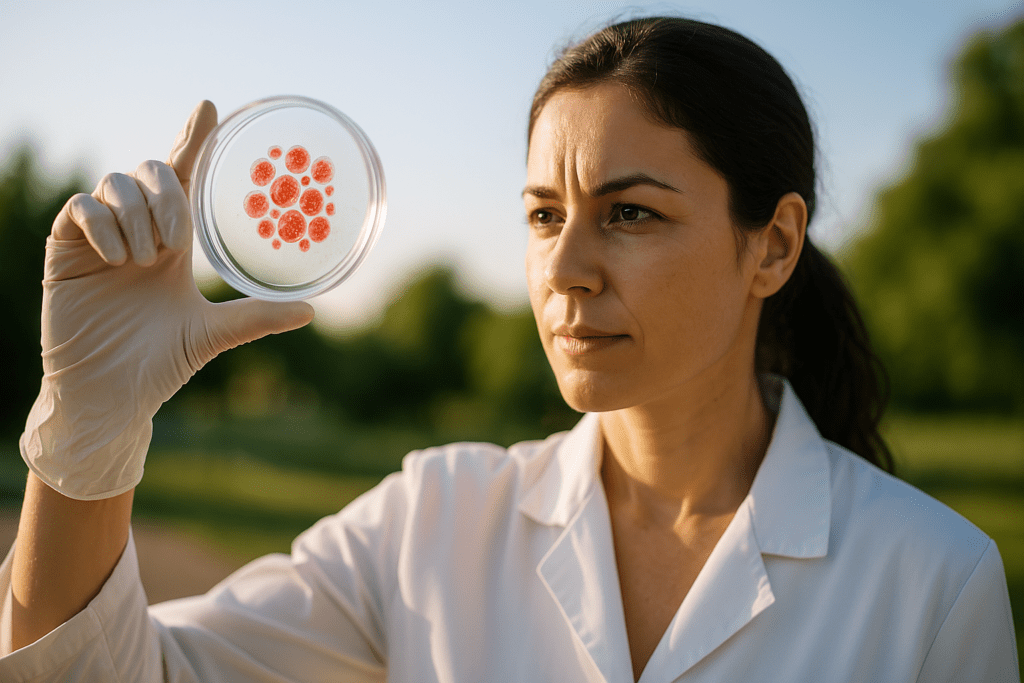Understanding the Urgency: Why Type 2 Diabetes Demands Innovative Solutions
Type 2 diabetes has long been recognized as one of the most pressing public health challenges of the 21st century. Characterized by insulin resistance and progressive beta-cell dysfunction, the condition affects over 400 million people globally, and the numbers continue to rise at an alarming pace. Despite advances in pharmacological treatments and lifestyle-based interventions, many patients struggle to achieve long-term glycemic control. Moreover, conventional therapies often address symptoms rather than the underlying pathology, prompting scientists to explore deeper, more transformative strategies. Among these, the potential of stem cell therapy has emerged as a particularly compelling frontier.
You may also like: Breakthroughs in Current Diabetes Research: What the Latest Studies Reveal About Treatment and Prevention
In recent years, stem cell research has moved from theoretical promise to tangible clinical relevance, especially in its application to chronic metabolic disorders like type 2 diabetes. Unlike traditional treatments that rely on external insulin or sensitizers, stem cell-based therapies aim to regenerate or replace the damaged cells responsible for insulin production and glucose regulation. With the global burden of diabetes escalating, breakthroughs in regenerative medicine offer renewed hope—not just for symptom management, but for disease modification, and possibly, reversal.
What Are Stem Cells and Why Are They Crucial in Diabetes Research?
At the core of regenerative medicine lies the unique biology of stem cells—undifferentiated cells with the capacity to self-renew and transform into specialized cell types. This ability makes them indispensable for repairing or replacing tissues damaged by chronic disease, including the insulin-producing beta cells of the pancreas. Among the various types of stem cells, embryonic stem cells (ESCs) and induced pluripotent stem cells (iPSCs) have garnered particular attention for their versatility and therapeutic potential.
ESCs, derived from early-stage embryos, possess the broadest differentiation capabilities, while iPSCs—adult cells reprogrammed to a pluripotent state—offer a more ethically sustainable alternative with reduced risk of immune rejection when autologously sourced. In the context of type 2 diabetes, these stem cells are being explored for their capacity to either differentiate into functional beta cells or support the repair of metabolic tissues impaired by chronic inflammation and oxidative stress.
Animal models have consistently demonstrated that stem cell-derived beta-like cells can restore glucose balance and reduce dependency on insulin therapy. These results have galvanized efforts to translate experimental success into human therapies. The implications of such research are profound—not only could stem cells reduce or eliminate the need for insulin injections, but they may also halt or reverse disease progression by targeting its root cause: the failure of endogenous insulin production and regulation.

From Bench to Bedside: How Stem Cell Therapies Are Evolving for Type 2 Diabetes
While stem cell-based treatments for type 1 diabetes have garnered considerable attention, the application of these therapies to type 2 diabetes is evolving rapidly and distinctively. Unlike type 1 diabetes, which is an autoimmune disease marked by complete beta-cell destruction, type 2 diabetes typically features both insulin resistance and a partial, progressive decline in beta-cell function. This duality introduces unique therapeutic challenges—but also opportunities.
Clinical research now aims to not only regenerate insulin-producing cells but also modulate the inflammatory and metabolic environments that impair their function in the first place. Researchers are developing combination strategies that include stem cell therapy, anti-inflammatory agents, and metabolic modulators to create a more favorable milieu for cell survival and integration. Furthermore, advanced gene-editing technologies like CRISPR are being used to enhance the functional performance of stem cell-derived beta cells, making them more responsive to blood glucose fluctuations and resistant to cellular stress.
Human trials are still in early stages, but initial results are encouraging. In several phase I and II trials, patients receiving encapsulated beta-like cells derived from stem cells showed measurable improvements in insulin sensitivity and reductions in fasting glucose levels. These outcomes signal a potential turning point in diabetes care, suggesting that stem cell therapy may offer durable, disease-modifying benefits rather than just temporary symptom relief.
Exploring the Type 2 Diabetes Stem Cell Breakthroughs in the Lab
Scientific laboratories across the globe are at the forefront of developing new protocols to optimize stem cell differentiation, delivery, and integration for type 2 diabetes treatment. In recent years, studies at leading institutions such as Harvard Stem Cell Institute, Stanford University, and the University of Toronto have unveiled novel methods for generating insulin-producing cells from iPSCs that mimic natural beta-cell functionality more closely than ever before.
These lab-grown beta-like cells are not only capable of secreting insulin in response to glucose but also show sustained viability when transplanted into animal models. Researchers are refining differentiation protocols to eliminate undifferentiated or partially differentiated cells that could lead to tumor formation, a major concern in stem cell-based therapies. Moreover, the use of three-dimensional organoid cultures and biomaterial scaffolds has improved the maturation and vascularization of these cells, further enhancing their therapeutic efficacy.
Some groundbreaking work is also being done on developing islet-like clusters that contain not only beta cells but also supporting alpha and delta cells, creating a more physiologically accurate microenvironment. These complex cell clusters offer superior performance in glucose regulation compared to isolated beta cells, moving the field one step closer to functional islet transplantation as a viable treatment option for type 2 diabetes.
Encapsulation and Delivery: Protecting Stem Cell Therapies from Immune Rejection
One of the most significant obstacles in stem cell therapy for diabetes—particularly type 2 diabetes—is the body’s immune response. Even when cells are derived from the patient’s own tissues, inflammatory processes associated with metabolic dysfunction can compromise the survival and function of transplanted cells. To address this, researchers have developed a variety of encapsulation technologies that protect the transplanted cells while still allowing essential nutrients and insulin to pass through.
Encapsulation techniques use biocompatible materials such as alginate or synthetic polymers to create a protective barrier around stem cell-derived beta cells. These microcapsules can be implanted subcutaneously or within the peritoneal cavity, where they integrate with the host’s tissues while remaining shielded from immune attack. In preclinical models, encapsulated cells have maintained insulin secretion and glucose responsiveness for several months without triggering a significant immune response.
Advanced encapsulation devices are now being tested in human trials. These platforms not only enhance cell survival but also allow for non-invasive monitoring and replacement, offering a practical and scalable model for clinical application. By eliminating the need for long-term immunosuppression, encapsulation significantly increases the safety and feasibility of stem cell therapy for diabetes, especially in older patients or those with comorbidities.

Understanding the Stem Cell Therapy for Diabetes Success Rate
As with any emerging treatment, understanding the success rate of stem cell therapy for diabetes requires careful consideration of both short-term outcomes and long-term durability. While results vary depending on the cell type used, method of delivery, and patient characteristics, recent trials offer promising insights into the potential effectiveness of these therapies in managing and possibly reversing type 2 diabetes.
In early-phase clinical studies, patients treated with stem cell-derived beta-like cells have shown sustained improvements in glycemic control, reduced reliance on insulin, and enhanced markers of beta-cell function. One landmark study published in Cell Stem Cell reported that over 60% of participants experienced a clinically significant reduction in HbA1c levels within six months of treatment. Another multicenter trial found that approximately 50% of patients were able to reduce or eliminate their need for daily insulin after receiving encapsulated beta-like cells.
Importantly, these results reflect not just transient changes but sustained metabolic benefits observed over months and, in some cases, years. However, it is worth noting that stem cell therapy is not universally effective for all patients. Individuals with advanced insulin resistance or extensive beta-cell depletion may respond less favorably, underscoring the need for personalized treatment strategies. Nonetheless, the current data suggest that the stem cell therapy for diabetes success rate is steadily improving as techniques become more refined and selection criteria more precise.
Overcoming Ethical, Financial, and Regulatory Challenges
Despite the scientific promise, stem cell therapy for type 2 diabetes faces several challenges that must be addressed to ensure widespread adoption. One of the most prominent concerns is ethical, particularly when it comes to the use of embryonic stem cells. Although iPSC technology offers an ethically acceptable alternative, the regulatory landscape remains complex, with different jurisdictions enforcing variable standards for research and clinical application.
Financial barriers also loom large. Stem cell therapies are currently expensive to develop and administer, and few are covered by insurance or public health systems. As production techniques become more efficient and scalable, costs are expected to decline—but for now, accessibility remains limited to clinical trials or private institutions.
Regulatory bodies such as the FDA and EMA are also navigating uncharted territory, as the long-term safety and efficacy of stem cell treatments are still under evaluation. While accelerated pathways exist for breakthrough therapies, these must be balanced against the need for rigorous testing and post-market surveillance. Encouragingly, global frameworks are emerging to support the responsible advancement of stem cell therapies, including registries, data-sharing networks, and collaborative consortia designed to monitor outcomes and refine best practices.
The Future of Personalized Regenerative Medicine for Type 2 Diabetes
Looking ahead, the integration of stem cell therapy with other personalized medicine tools offers the potential to radically transform type 2 diabetes care. Innovations in genomics, bioinformatics, and single-cell sequencing are helping scientists identify patient-specific markers that influence disease progression and treatment response. This could enable clinicians to tailor stem cell-based interventions to individual metabolic profiles, increasing their efficacy and minimizing risks.
Moreover, stem cell-derived organoids and lab-grown tissues may soon serve as platforms for personalized drug testing and disease modeling. For instance, scientists could use a patient’s iPSCs to generate pancreatic tissue in vitro, test various therapeutic agents, and determine the most effective regimen before initiating treatment. This approach not only improves outcomes but also reduces the trial-and-error nature of current diabetes management strategies.
Collaborations between academic institutions, biotech firms, and healthcare providers are already laying the groundwork for integrated care models that combine cell therapy, digital monitoring, and precision diagnostics. These ecosystems could provide patients with continuous feedback, real-time data on treatment effectiveness, and adaptive care plans that evolve with their needs. As the technology matures, stem cell-based therapies may no longer be viewed as standalone interventions but as central pillars in a dynamic, individualized treatment paradigm.

Frequently Asked Questions (FAQ): Stem Cell Research and Type 2 Diabetes
1. How does stem cell therapy for type 2 diabetes differ in effectiveness depending on a patient’s age or disease duration?
Age and the duration of type 2 diabetes can significantly influence how well a patient responds to stem cell therapy. Younger individuals or those diagnosed within the past few years may retain more functional pancreatic beta cells and exhibit lower levels of systemic inflammation, making them better candidates for regenerative approaches. In contrast, patients with long-standing type 2 diabetes often have extensive metabolic damage and more pronounced insulin resistance, which can dampen the effectiveness of cell-based interventions. This variability directly affects how the type 2 diabetes stem cell strategy is designed, especially in personalized protocols. As the science advances, researchers are investigating how biomarkers related to aging and disease progression might help predict the success of stem cell therapy for diabetes and optimize outcomes accordingly.
2. Can stem cell therapies be combined with other treatments to improve outcomes in type 2 diabetes?
Yes, combining stem cell therapy with other treatment modalities is an emerging area of interest in type 2 diabetes care. Rather than relying on stem cells in isolation, researchers are exploring the synergistic potential of pairing these therapies with anti-inflammatory medications, GLP-1 receptor agonists, or dietary interventions. For instance, patients undergoing stem cell infusion may also benefit from metabolic reprogramming through low-glycemic diets or intermittent fasting protocols to enhance cell engraftment and performance. These combination strategies may improve the overall stem cell therapy for diabetes success rate by addressing not only the regeneration of beta cells but also the broader metabolic context in which they must function. Clinical trials are increasingly being designed to evaluate such multi-targeted approaches, offering more realistic and sustainable pathways for remission.
3. What role do genetic factors play in the effectiveness of stem cell treatments for type 2 diabetes?
Genetic predisposition can influence both disease development and the therapeutic response to regenerative interventions. Certain gene variants may affect how stem cells differentiate into insulin-producing cells or how they survive once implanted. Patients with polymorphisms in genes related to beta-cell development, insulin signaling, or immune modulation may respond differently to type 2 diabetes stem cell treatments. As a result, pre-treatment genetic screening may become a standard step in the future to personalize therapies and predict the stem cell therapy for diabetes success rate more accurately. Ongoing research into epigenetics and gene editing (such as CRISPR-based modifications) could further refine this process, tailoring stem cell therapy to match individual genetic profiles for maximum benefit.
4. Are there psychological or emotional considerations for patients undergoing stem cell therapy for diabetes?
Absolutely. While the biomedical aspects of type 2 diabetes stem cell therapy are well-researched, the psychological experience of patients undergoing this innovative treatment is equally important. Many patients report feeling a renewed sense of hope and empowerment, especially when traditional therapies have failed to control their glucose levels. However, these high expectations can also lead to emotional distress if the results do not meet personal goals. Psychological counseling and peer support should ideally be integrated into the care model to prepare patients for both the benefits and limitations of the therapy. Emotional resilience may even influence adherence to complementary treatments that can enhance the overall stem cell therapy for diabetes success rate, such as post-procedural lifestyle changes.
5. How are researchers addressing safety concerns like tumor formation in stem cell therapy for diabetes?
Tumor formation, or teratoma development, has long been a concern in the field of regenerative medicine, particularly with pluripotent stem cells. To mitigate this risk, scientists are using refined differentiation protocols that minimize the presence of undifferentiated cells prior to transplantation. Some teams are also exploring the use of suicide genes—genetic safeguards that can be triggered to destroy problematic cells if necessary. Additionally, encapsulation techniques have become more sophisticated, allowing the containment of transplanted cells while still enabling nutrient exchange and insulin release. These safety advancements have had a direct impact on the stem cell therapy for diabetes success rate by improving not just outcomes but also patient and regulatory confidence in the procedure. Vigilant post-treatment monitoring further ensures that any rare adverse effects are caught early and managed effectively.
6. How might socioeconomic factors impact access to stem cell treatments for type 2 diabetes in the future?
Access to cutting-edge therapies like stem cell interventions is often shaped by a complex web of socioeconomic factors. Cost remains a significant barrier, especially since many insurance plans do not yet cover these experimental treatments. Patients in lower-income or rural communities may have limited access to clinical trials or specialized facilities where type 2 diabetes stem cell therapies are offered. Language barriers, digital literacy, and transportation also play roles in creating disparities. Public health initiatives and nonprofit partnerships are essential for improving equitable access and expanding education around regenerative medicine. Without deliberate efforts to bridge these gaps, improvements in the stem cell therapy for diabetes success rate may disproportionately benefit privileged populations, undermining the potential for broad public health impact.
7. Are there any differences in how men and women respond to stem cell therapy for type 2 diabetes?
Sex-based differences in treatment response are gaining attention in the broader field of personalized medicine, and type 2 diabetes stem cell research is no exception. Hormonal fluctuations, fat distribution, and immune response patterns can all vary by sex and influence how stem cell therapies perform. Preliminary data suggest that estrogen may play a protective role in beta-cell survival, potentially giving premenopausal women a slight advantage in certain therapeutic contexts. However, men may show greater improvements in insulin sensitivity following stem cell transplantation, possibly due to differences in muscle mass and metabolic rate. Ongoing studies aim to dissect these nuanced differences, with the goal of optimizing the stem cell therapy for diabetes success rate through sex-specific treatment protocols and outcome tracking.
8. How is artificial intelligence being used to enhance stem cell therapy for type 2 diabetes?
Artificial intelligence (AI) is rapidly becoming an integral tool in refining regenerative therapies for metabolic diseases. Machine learning algorithms can analyze large datasets to predict how individual patients will respond to various stem cell preparations. These tools also assist in quality control during cell differentiation processes by identifying subtle markers of cell maturity or contamination. In the future, AI could help monitor patient progress post-treatment, detecting early signs of graft failure or immune rejection. Integrating AI with clinical decision-making not only streamlines operations but also helps improve the stem cell therapy for diabetes success rate by enhancing precision and minimizing human error. This technological synergy holds promise for creating more consistent and reliable outcomes in real-world settings.
9. What are the environmental and sustainability concerns associated with scaling up stem cell therapies for diabetes?
As stem cell therapies transition from small-scale clinical trials to broader public availability, their environmental footprint comes under scrutiny. The production of stem cell lines requires energy-intensive laboratory environments and significant water and chemical usage. There are also concerns about the ethical sourcing of biological materials and the disposal of biomedical waste. Laboratories and biomanufacturers are beginning to adopt green biotechnology principles, such as closed-loop systems and recyclable materials, to minimize environmental impact. Addressing sustainability will be essential not only for public perception but also for ensuring that improvements in the type 2 diabetes stem cell therapy landscape are both scalable and responsible in the long term. Forward-thinking policies and cross-sector collaboration will be key to making regenerative medicine both accessible and environmentally conscious.
10. What can patients do to support the success of stem cell therapy for type 2 diabetes after treatment?
Post-treatment care plays a pivotal role in optimizing outcomes after receiving stem cell therapy for type 2 diabetes. Patients are encouraged to maintain a stable, anti-inflammatory diet and engage in moderate physical activity to support the metabolic environment needed for newly introduced cells to thrive. Managing stress, getting adequate sleep, and avoiding toxins such as tobacco and excessive alcohol can further enhance cellular viability. Many clinics now recommend follow-up bloodwork to monitor biomarkers such as HbA1c, C-peptide levels, and inflammatory cytokines to assess the ongoing success of the intervention. Ultimately, the stem cell therapy for diabetes success rate is not determined solely in the lab—it is shaped just as much by patient engagement and post-procedure lifestyle adjustments that nurture the regenerative process from within.
Final Reflections: What Type 2 Diabetes Stem Cell Breakthroughs Mean for the Future of Treatment
In the quest to combat type 2 diabetes, stem cell research has carved out a promising path that diverges from traditional pharmacological approaches. By targeting the underlying mechanisms of the disease—particularly beta-cell dysfunction and metabolic imbalance—these therapies offer a chance not merely to manage symptoms, but to alter the course of the condition itself. The type 2 diabetes stem cell revolution is not a distant dream but a rapidly unfolding reality, with emerging data validating the therapeutic potential of these cellular interventions.
While challenges persist, the stem cell therapy for diabetes success rate is steadily improving as scientific methodologies evolve, clinical protocols are refined, and personalized medicine takes center stage. These therapies hold particular promise for patients who have exhausted conventional treatment options or face significant side effects from existing medications. As access expands and costs decrease, stem cell-based interventions may become not just a cutting-edge option, but a standard component of diabetes care.
The convergence of stem cell technology, genomics, and systems biology is reshaping our understanding of chronic metabolic diseases. For those living with type 2 diabetes, these innovations offer a new language of hope—one defined not by insulin dependency or disease progression, but by cellular renewal and functional recovery. In this light, the breakthroughs in type 2 diabetes stem cell therapy are not merely scientific achievements—they are profound expressions of medicine’s evolving potential to heal from within.
regenerative medicine for diabetes, beta cell regeneration therapy, glucose regulation through stem cells, islet cell transplantation research, innovative diabetes treatments, future of diabetes care, personalized medicine for diabetes, insulin independence therapy, metabolic disease reversal, cell-based diabetes treatments, diabetic complications and stem cells, biotechnology and diabetes, non-pharmacological diabetes therapies, autologous cell therapy, CRISPR in diabetes research, pancreatic function restoration, emerging diabetes research, bioengineered islet cells, clinical trials for diabetes innovation, immune protection in cell therapy
Further Reading:
Role of Cell-Based Therapies in T2D
Emerging Breakthroughs In Diabetes Treatment: A New Era Of Hope
Stem Cell-Based Clinical Trials for Diabetes Mellitus
Disclaimer
The information contained in this article is provided for general informational purposes only and is not intended to serve as medical, legal, or professional advice. While MedNewsPedia strives to present accurate, up-to-date, and reliable content, no warranty or guarantee, expressed or implied, is made regarding the completeness, accuracy, or adequacy of the information provided. Readers are strongly advised to seek the guidance of a qualified healthcare provider or other relevant professionals before acting on any information contained in this article. MedNewsPedia, its authors, editors, and contributors expressly disclaim any liability for any damages, losses, or consequences arising directly or indirectly from the use, interpretation, or reliance on any information presented herein. The views and opinions expressed in this article are those of the author(s) and do not necessarily reflect the official policies or positions of MedNewsPedia.


